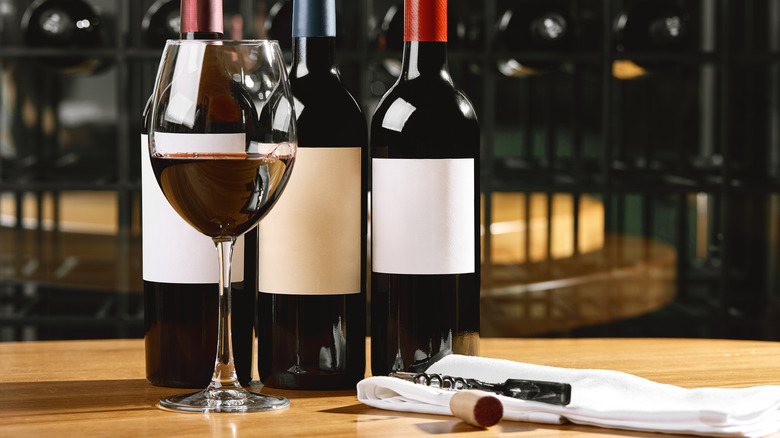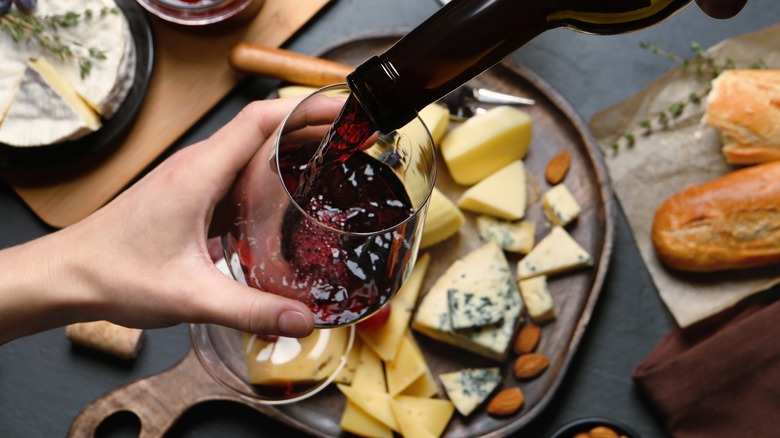What's The Difference Between Table Wine And Regular Wine?
If you've spent any time traveling around Europe, especially in France and Italy, you might be familiar with the term table wine. In many European restaurants, wine lists typically present a variety of options, often named after specific regions, with a separate section dedicated to table wine. If you've had this kind of experience and it's left you scratching your head, there's no need to worry.
Table wine holds a distinct definition within Europe, whereas in the United States, it's more subjective. European wines are held to high-quality standards if they want to be considered quality wines. A wine that does not meet the criteria of quality wine is categorized as table wine. Quality wines must be made in specific ways and use grapes from certain regions. When these rules are followed, the wine will have quality wine status and will be labeled as such. In the United States, wines are not rated this way, so there's no distinction between so-called quality wines and table wines. Determining if a wine is a good table wine is really left to the discretion of the person purchasing or ordering the bottle.
European table wine
When dining in Europe, it is not necessary to limit yourself to exclusively drinking quality wines. It is worth noting that quality wines in Europe are distinguished by the presence of a QWPSR label. This stands for "quality wines produced in specific regions," signifying that the wine meets a certain standard of quality. An example of this might be French Burgundy or French Champagne, which come from those specific regions in France. European wines that do not hold the QWPSR stamp of approval are classified as table wines.
Table wines are distinguished from quality wines solely based on standards of practice, but those standards are not always reflected in the taste. In many cases, the rules and regulations that differentiate quality wines from table wines are simply about where the grapes come from and how the wine is made. A bottle of wine might lack a QWPSR label because the winemaker chose to use a different technique in their barrel room, or wanted to create a special blend. It doesn't necessarily mean that the wine will taste bad, nor does it mean that the wine won't be a beautiful complement to a meal you're eating.
If you are traveling around Europe and feel a bit lost about wine pairings with your meal, feel free to ask your host or server for their recommendation. Wine tasting is subjective, so at the end of the day, drink the wine that you like best, regardless of the label.
Table wine in the United States
In the United States, table wine is generally considered cheaper and lower in alcohol. Generally speaking, a table wine in the U.S. will be 14 percent alcohol by volume, or lower. The idea is a nice wine that can be sipped over dinner without leaving the drinker spinning in their seat. However, in the U.S., there is no technical distinction between table and quality wines. While table wine might be thought of as cheaper and lower in alcohol, any wine that you care for can be a nice complement to a meal. Perhaps you wouldn't consider sparkling wine, champagne, or port to be table wines, but any red wine or white wine varietal that you enjoy and that complements your meal certainly deserves a place on your table. With that said, if you're dining in a restaurant known for its wine, maybe skip the table variety.
If you are having a dinner party and serving wine with your hors d'oeuvres, as well as dinner, then you might serve your nicer wines at the start of the evening when everyone's palates are fresh. The truth is, the more wine a person drinks, the less likely they are to notice all the nuances of the drink in their glass. Serving a less special table wine with dinner can be a practical choice, saving the great bottles in your collection for moments when they can truly be appreciated.



